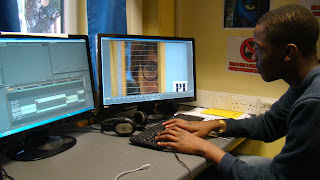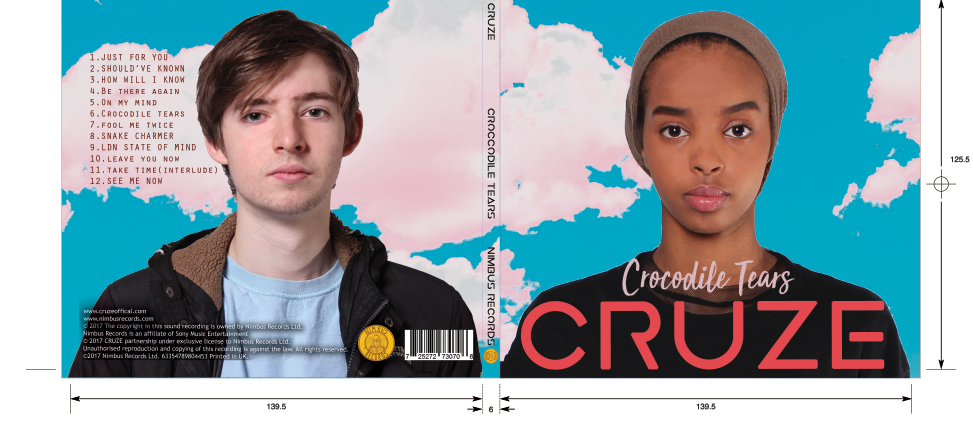My Preliminary Exercise Evaluation
My Preliminary Video
1. Who did you work
with and how did you manage the task between you?
I think that it is important to work as a team as one can be
more efficient with the quantity of work produced and the speed at which the work
is produced.
I worked with Noa Craig and Kristina Gadalin to plan the continuity sequence, film the video and we edited in sub groups, I edited by myself. I
also made the script and shoot board but those were based off the ideas that we
all had as a group. We all had an equal share in helping with the discussion and story boarding
for the planning of the sequence. I did most of the filming as Noa and Kristina
were acting in it the sequence. I don’t think that there was one leader throughout
but people played to their strengths and were the leaders in the areas that
they were confident about.
I think we all worked well as a team and our approach to the
project was great. The only thing that I think we could do differently is
editing as a group. Unfortunately, Kristina left our school which is why she isn't in the group photo.
2. How did you plan
your sequence? What processes did you use? What theories did you try to take
into account when planning, shooting and editing?
During a group discussion we made a story board which
displayed the order and look of all of the shots, a shoot board so we knew what
exactly we were filming and when and we also made a script so the actors knew
what they were saying. The story board was useful as we were able to visualise what each shot would look like and make sure that the shots flowed continuously. We also blocked out each shot to make sure it worked
and added to the narrative flow.
 |
| Story Board |
 |
| Shoot List |
 |
| Script |
The continuity principles played a heavy part in our video
such as:
·
Shot-Reverse-Shot
·
·
The 180 Degree Rule
·
Match on Action (The green pen)
We also took these film principles into account:
The 30 Degree Rule
The Classic Narrative Pattern
We also took these film principles into account:
The 30 Degree Rule
The Classic Narrative Pattern
3. What technology
did you use to complete the task, and how did you use it?
This is a table showing all of the equipment we used for our continuity sequence.
This is a table showing all of the equipment we used for our continuity sequence.
Technology
|
Utility
|
Positives
|
Negatives
|
Camera
Canon Legria HFG 30
|
We used it to shoot the video and to
help get the framing right.
|
Small and portable so it was easy to manoeuvre
and get the shots right. Automatic focus meant that it was easier to get the
right shot.
|
Due to the camera being in automatic
focus it meant that we were not able to change the subject in focus.
|
Tripod
Libec TH-650 HD |
We used it to keep the shots steady and
to help get the framing right.
|
Helped correct the framing of shots and
helped keep the camera steady.
|
When it was completley extended it was very big meaning it was hard to get certain shots due to insufficient space for the tripod.
|
Microphone
Canon DM-100 Directional Microphone |
We used it to improve the quality of our
audio.
|
It reduced background noise and
improved the overall audio quality of the video.
|
Due to the microphone being fixed on
the camera, it meant that we could only capture sound from the direction that
the camera was facing which was a challenge in the shot-reverse-shot.
|
Adobe Premiere Pro
|
We used it to edit our sequence.
|
We were able to easily edit out videos
on the dual monitor, multi track setup/
|
I don’t see any major cons.
|
 |
| Me filming with the Camera, Microphone and Tripod |
 |
| Me at the edit suite using Adobe Premiere Pro |
 |
| Adobe Premiere Pro |
I think the equipment that we used was very much to our advantage and allowed us to go past a lot of the limitations that we had.
4. What factors did
you have to take into account when planning, shooting and editing?
The major factors that we had to take into account were the
limits of the location and of time.
When planning we had to maximise our time efficiently. This
meant that we had to choose our ideas quickly and keep them relatively simple
so we could still pull them off with the limitations of location that we had.
As we could only use the media department as a setting it meant that we had to
keep our ideas simple, consider the lighting, spacing and the challenges of using a classroom setting for our video.
When shooting our video we had to we had to get a lot of
shots that needed various set ups out of the way, we knew that this would take
a lot of time so we scheduled our time so that we had enough time to do the
various shots. Also we were able to get a large number of shots done over a
short amount of time with the shot-reverse-shot.
When editing I had to take into account the limitations of
time as I only had 1 hour to edit. This meant that I approached the task with a
need to work through it quickly and carefully.
5. How successful was
your sequence, please identify what went well, and in hindsight, what would you
improve/do differently?
Our video matches the guidelines of the brief which were to make a continuity task involving filming and editing a character opening door, crossing a room and sitting down opposite another character. My video follows a girl walking into a room, then speaking to a teacher about not doing homework
and then walking out.
The shot-reverse-shot of the teacher and student speaking
went well as the sequence flowed very well and worked well to support the
narrative flow of the continuity sequence.
The use of the 180 degree rule at the start allowed Kristina's character and the setting to be introduced in a logical way that flowed well, as it showed Kristina moving in the same direction over the 2 shots.
The use of the 180 degree rule at the start allowed Kristina's character and the setting to be introduced in a logical way that flowed well, as it showed Kristina moving in the same direction over the 2 shots.
In hindsight, I would have re-shot the two shots needed for
the shot-reverse-shot sequence. If we had started filming before Kristina had sat down
from both angles then it would have appeared much smoother when it was cut and wouldn’t
appear as a jump cut.
6. What have you
learnt from completing this task? Looking ahead, how will this learning be
significant when completing the rest of your foundation coursework, do you
think?
From this task I have learnt how to effectively and efficiently work in a group and maximise the use of time.
Like I said I think that time management skills are key skills that I have learned from the task, not just when planning but also when shooting and editing. In terms of editing I have also learned how narrative flow can be created easily. Lastly I feel this term has taught me how to film effectively in order to achieve a continuous narrative flow, something that would have helped to avoid the jump cut.
After this experience I feel more confident and ready for the next task which is to to make an opening sequence for a new fiction film. This task will be much bigger as it will feature different locations and more actors but I am really looking forward to starting it.
Like I said I think that time management skills are key skills that I have learned from the task, not just when planning but also when shooting and editing. In terms of editing I have also learned how narrative flow can be created easily. Lastly I feel this term has taught me how to film effectively in order to achieve a continuous narrative flow, something that would have helped to avoid the jump cut.
After this experience I feel more confident and ready for the next task which is to to make an opening sequence for a new fiction film. This task will be much bigger as it will feature different locations and more actors but I am really looking forward to starting it.





